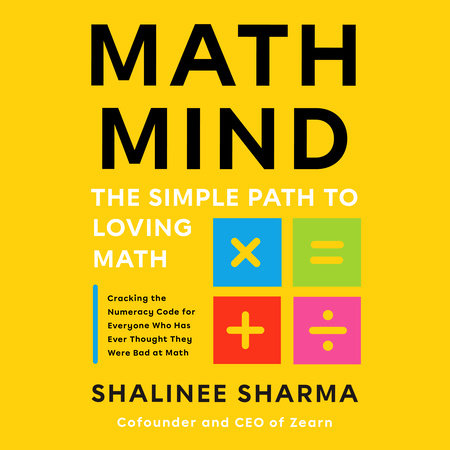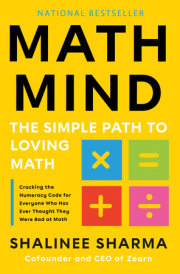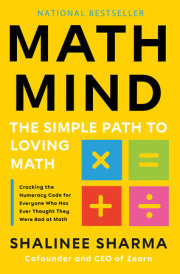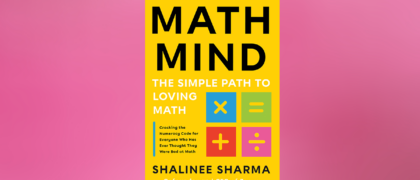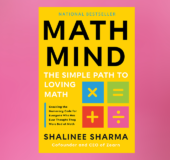What if I told you that we don't really know much about how we learn math?
For all the rigid rules and drills in the classroom, behind the scenes there's a shocking lack of certainty. "What do we really know about how to teach math to children?" the writer Jay Caspian Kang asked in a recent article on the state of math education. "The answer is not all that much-and what little we do know is highly contested."
This is a startling thing to hear about one of the fundamental building blocks of K-12 learning. Especially considering that an understanding of fractions in elementary school predicts the completion of algebra, and completion of algebra is the most predictive activity in K-12 of getting to and through college. Math can change life trajectories.
But what Kang found is also what I have found on my own more than decade-long journey through math education. In building and constantly improving a K-8 math learning platform, which now serves millions of students and hundreds of thousands of teachers, I've witnessed up close how much doubt and disagreement there is about basic questions of how to build mathematical minds.
More than a decade in, however, I know one thing for certain. We all could have been math kids.
Ten years ago, I wouldn't have believed it. While I knew I became a math kid and wasn't simply born one, I had not generalized my experience. But various events, especially the COVID period, took me on a high-intensity learning journey. As an optimist, I'd like to have believed in everyone's innate ability. But I am a skeptical optimist, meaning that I can believe something only when I see it with my own eyes. I assumed my personal experience was a one-off and that math success was a rare inborn ability, because that's the dominant societal narrative. Though I had worked hard and scraped by, I still assumed that the majority who succeeded with math were those with natural abilities.
Why does what we believe about math learning matter? Because the assumptions we start with matter, and some even decide the outcome. Assumptions consciously and unconsciously shape our behavior. Right out of college, I had a job where I built financial models that attempted to predict outcomes. As part of our training, we were told it was essential to find and explore our most sensitive assumption in the analytical model, meaning the variable that, if changed, would totally change the outcome or the answer the model would point us to.
Sitting alone late at night in my cubicle with my Excel spreadsheets, finding the most sensitive assumption, I would get lost in thought, dwelling on what assumptions were most sensitive in other parts of my life. If I want to drink better coffee and eat authentic Indian food, could I assume the cafés and Indian restaurants would improve in Boston? If not, then should I move? These assumptions can predict the future because inadvertently, they can decide the future.
Consider that "Who can learn math?" and "How do we teach math?" are two fundamentally divergent questions. Each starts from a radically different assumption and goes on to manifest itself distinctly. In one project we are sorting, and in the other we are teaching.
To grasp the importance of assumptions about who can learn math, let me share the untold story of the American high school revolution. In 1890, fewer than 7 percent of American students went to high school. High school was a luxury for the rich or a privilege for those who could pass an admissions test. All enjoying this luxury were born the right gender and ethnicity. Yet by 1940, the share of US children attending high school had risen more than tenfold to over 70 percent. This dramatic change in the way America chose to educate its children transformed the culture, economy, and politics of the twentieth and twenty-first centuries and was seminal to the American-led global technology revolution that we are still in today.
It's hard to overstate how seismic this shift was. Historically in the United States and Europe, children were tested (read "sorted") by the specific high school they sought to attend, to determine if they were worthy. In the first decade of the twentieth century, America checked that sorting-based assumption. The zeitgeist shifted suddenly and many education leaders began to wonder if the act of going to high school would enable students to do well on the kind of tasks the admissions tests were assessing for and thus become more productive members of society.
Horace Mann, an education leader from the early 1800s who didn't live to see the high school revolution but influenced its design, advocated for free and universal education. He wrote that education "is a great equalizer of conditions of men-the balance wheel of the social machinery." While Europe continued to sort and test, the US decided to teach "everyone," including girls. (However, in most places "everyone" still included only those who were white. The work of integrating our education system continues today.) With this investment in children, in our human capital, the United States surpassed other developed countries at the time in technological and economic advancement. It turned out it was better for everyone to teach all students a high school curriculum instead of just the chosen few. Within a few decades, Europe followed suit. The American high school revolution, not the European sorting model, became our default setting for all countries across the world.
Positive Deviance Let me circle back to the first experience that pushed me to question my assumptions. In 2012, I had quit my fast-paced job in business to start the nonprofit Zearn with a group of educators. Though I had spent more than a decade in business, I had never planned to be in the industry that long. As a child, I told people that I wanted to work at the American Red Cross, though I did not know what that meant. In college, I explored careers in the social sector and direct service. Among the ways I wanted to serve, education held a special place.
As the child of refugees, I had seen firsthand how access to an excellent education could transform lives. Once, both of my parents had been small children on the wrong side of the border. In the summer of 1947, as India won its independence from colonial rule, the devastating and hastily planned Partition by the British-with India and Pakistan on each side of a new border-resulted in the displacement of fourteen million people and an estimated three million deaths. It's the largest refugee crisis in human history. As a child, watching the aftershocks of Partition unfold in my family on multiple continents, I learned three key lessons: how an education could change the trajectory of a life, how many people weren't sufficiently lucky to obtain one, and how grossly unfair the whole system was. So, when the chance to spend my time and energy increasing access to education emerged, I grabbed it.
We founded Zearn to answer two questions: Could we continue the work of the high school revolution using digital tools to further democratize access to an excellent education? How could technology complement the work of teaching and learning? While charting our path, I found that the most interesting answers were to questions I had not initially asked, and I came to question several assumptions I didn't know I had.
There was no manual for what I wanted to do. I had to go a different way. In the book Switch, Chip and Dan Heath share a schema for solving hard problems in the absence of existing instructions. The method is to study "bright spots," the particular cases when things go right against the odds. In rural Vietnam, they write, child malnutrition was seen as an inevitable result of poverty and poor sanitation, so that nothing could be done about it until those underlying problems were solved. In the 1990s, leaders of Save the Children in Vietnam decided that these beliefs were true but useless. They couldn't wait for poverty and unsanitary conditions to be fixed to deal with malnutrition.
The team looked at the children who were somehow thriving in the same context that left others malnourished. They identified many small, subtle parental behaviors that departed from the norm: some mothers fed their kids four times a day instead of the usual two, dividing up the same amount of food into more meals. Feeding kids by hand rather than having them eat from a communal bowl also produced healthier outcomes, as did giving them bits of shrimp and crab found in the rice paddies, which was considered inappropriate for kids, and sweet potato greens, which were regarded as a weed.
During my own pathfinding period, I began to search for bright spots. I met teachers whose students came from low-income neighborhoods and were scoring at the highest level on the annual state math tests. While, in general, wealth and resourcing are sadly too predictive of educational achievement for the health of our society, here we saw a positive deviance, remarkable success against the odds. Observing these teachers, I discovered they were employing subtle but highly effective techniques that helped their students learn and love math-doing for education what bits of shellfish and sweet potato greens did for nutrition.
Some teachers I met were teaching problems differently, creating positive deviance-just like the Vietnamese parents who were feeding their kids differently, resulting in positive health outcomes. These teachers were focused on their students' deeply understanding the math. They didn't prioritize only making them work through the procedures of finding the least common multiple, though their students could certainly compute accurately and utilize these strategies when required. They knew that kids could go through the motions and take several minutes to do dozens of calculations to come up with the answer. They also knew that students could do this accurately without the least bit of understanding of what they were doing. Finally, they knew this was a failing proposition.
When the teachers shared a fractions problem, the first thing they did was to turn them into meaning. They would instruct the students, "Remember fractions are numbers, not hieroglyphic symbols. Before you follow all the procedures, make sure you understand this problem. Use pictures or tell yourself a story. Do whatever you need to do."
Some teachers drew pictures on the board to move the fractions from symbolic gobbledygook to meaning everyone could grasp. They showed their students that understanding was essential in mathematics, and sometimes the reward was having no need to calculate at all.
I was thunderstruck by this difference. Because this is what I did by myself in my sixth-grade bedroom to survive and eventually succeed in Mr. Snyder's math class. I was so far behind, I couldn't go back and memorize all the procedures and tricks I had missed, so I tried another strategy. I tried to leapfrog and understand. I now have words for what I was doing. In order to understand, I made easier problems, drew pictures, or tried another way. While sometimes it took much longer, I worked to understand rather than only memorize. And here in these classrooms I visited, kids were being shown that there was meaning. They were being taught to look for and find understanding; they were taught to expect it. It electrified me to see. No wonder these kids were succeeding. They were being taught the number sense that some of us had been lucky enough to figure out on our own.
Copyright © 2024 by Shalinee Sharma. All rights reserved. No part of this excerpt may be reproduced or reprinted without permission in writing from the publisher.

